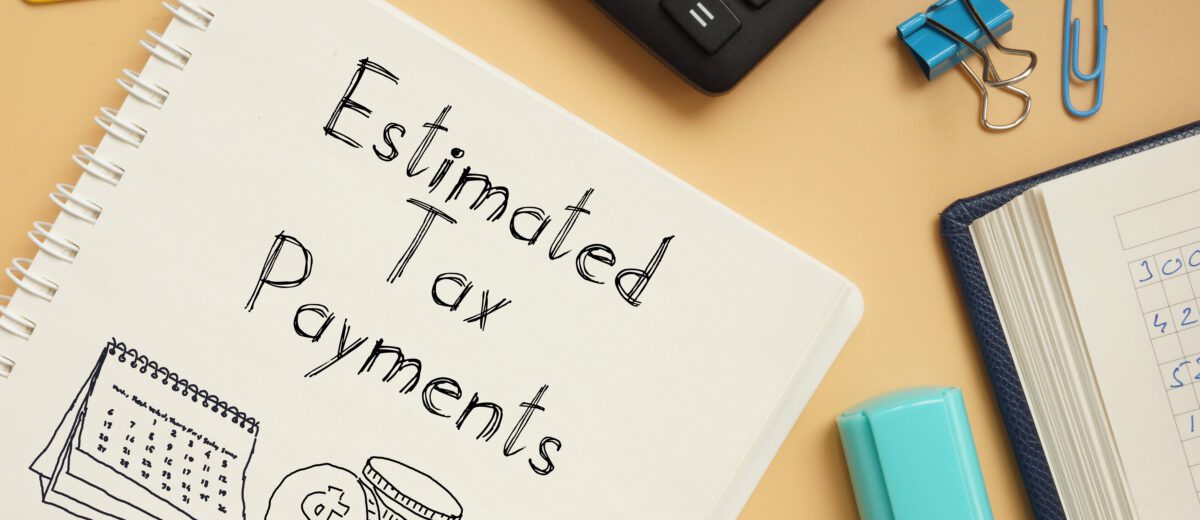Do I REALLY Need to Make Estimated Tax Payments?
Most taxpayers don’t need to even consider this question. If you’re paid by an employer and they withhold your taxes during the year, it’s unlikely you’ll need to add the complexity of estimated payments. This assumes you’ve completed your W-4 form correctly (if you routinely owe taxes or get large refunds, you may want to re-do your W-4).
But if your income is not derived from an employer who is doing your tax withholding for you, it’s up to you to make sure the IRS is getting their piece of the pie – and there’s a confusing system of figuring out exactly what should be paid… and starting October 1, 2023, the importance of doing so appropriately increased! The penalty assessed by the IRS for under-withholding or underpayment of estimated taxes went up to 8% on that day. That’s up from 3% just a couple years ago.
Obviously, self-employed individuals are frequently subject to estimated tax requirements. But people who realize gains on sales of property or other investments, or those who have taxable income from retirement accounts are also included in the range of people who need to pay attention.
Often, we come across clients who end up owing penalties for underpayment of estimated taxes… and, almost as often, we encounter clients who are paying estimated taxes when they don’t really need to (just because your accountant or TurboTax gave you estimated tax vouchers doesn’t necessarily mean you have to use them)! Here are a couple of ways to stay out of both those categories:
Pay as you Earn
The most compliant way of keeping yourself away from underpayment penalties is to calculate the amount you’ve made during each quarterly tax period and to use the worksheet the IRS provides, which is accessible here.
When the IRS refers to ‘quarters’, they may not be exactly what you think. For 2024,
| For money you make during this period | Estimated taxes are due on |
| September 1 – December 31, 2023 | January 15, 2024* |
| January 1 – March 31, 2024 | April 15, 2024 |
| April 1 – May 31, 2024 | June 17, 2024 |
| June 1 – August 31 | September 16, 2024 |
*Two things to note:
- You can skip this payment if you file your return by 1/31/24 and have submitted any balance owed with your 2023 return.
- In Maine and Massachusetts, you actually have until February 15, 2024 to make this payment as a special provision due to “hurricane” Lee.
Now, ‘most compliant’ never means ‘easiest’! Fear not: there are relatively easier ways to avoid penalties for coming up short on your estimated taxes.
Safe Harbors
Two safe harbor provisions can save you the hassle of doing all those calculations. As long as you make regular estimated tax payments and they amount to one of these two safe harbors, you need not worry about underpayment penalties, no matter how much you end up owing when you file:
- Safe harbor 1: Estimated taxes (plus any withholding) amount to at least 90% of what your total tax is for the tax year.
- Safe harbor 2: Estimated taxes (plus any withholding) amount to at least 110% of what your total tax was for the PRIOR year. (If you make less than $150,000, it’s only 100% of prior year taxes).
Again, you may still owe – and owe a LOT – once you file, but provided you’ve kept up with those payments and fall under one of those safe harbors, you won’t pay an underpayment penalty, even if you owe millions.
Exceptions and hacks
One frequent area of confusion: On occasion, people end up getting a tax refund and STILL end up owning an underpayment penalty. How can this happen??? Well, generally it’s because they made money in the first part of the year and waited until the last quarterly estimated payment to true-up what they think they will owe.
Again, to avoid penalties for under-withholding, you do need to make sure estimated payments are made steadily throughout the year. Exceptions apply, particularly for fishermen and farmers, who are more likely to have income concentrated into parts of the year.
One hack to consider: If you have income from earlier in the year, and haven’t adequately paid estimated taxes, if you are taking distributions from a tax-deferred account like an IRA or 401(k), you can arrange to have significant (up to 100%) income taxes withheld from later distributions. This counts toward your tax withholding obligation, and regardless of when it happens during the year, taxes withheld in this fashion are considered to have been evenly withheld during the year!
As always, check with your PFA advisor and/or your tax professional if you are concerned about whether you will have adequate money withheld or made with estimated payments!



